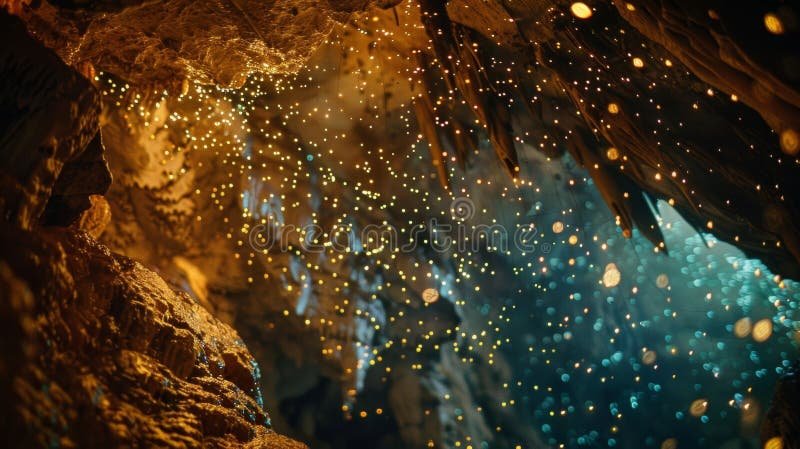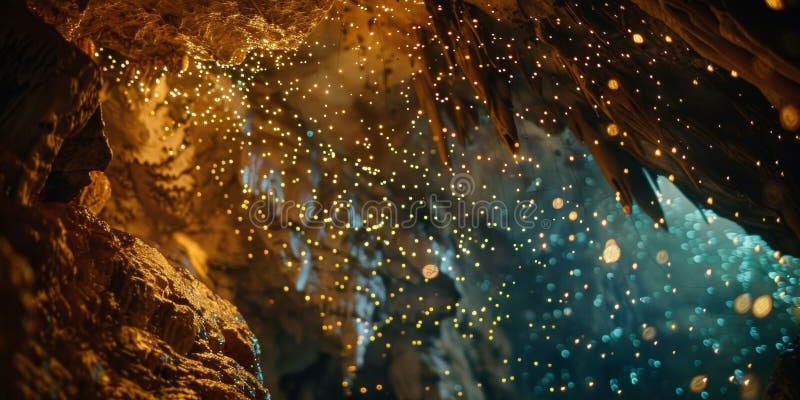
In this blog post, we’ll dive into the world of glow worms and explore how moisture in their environment affects their life cycles. Understanding this connection isn’t just cool; it also helps us appreciate the delicate balance of ecosystems. So grab a cup of coffee, settle in, and let’s explore this intriguing topic together!
What Are Glow Worms?
Glow worms aren’t your typical worms. In fact, they’re the larval stage of certain beetles, mostly found in damp, dark places like caves and forests. The most famous species are the *Arachnocampa* found in New Zealand and Australia. These tiny creatures can emit a mesmerizing blue-green light, which they use to attract prey. It’s like having a little lantern that helps them catch tiny insects floating by.
The light comes from a chemical reaction that creates bioluminescence. Think of it like a glow-in-the-dark sticker you had as a kid but way cooler! The glow acts as bait. In a humid environment where moisture levels are high, glow worms thrive, and their light shines even brighter. So, where you find glow worms, you usually find a rich, moist habitat.
Why Moisture Matters
Moisture plays a crucial role in the life of glow worms. These creatures prefer environments where the humidity is high. Why? Because moisture is essential for their survival and development. It helps keep their silk threads sticky, which they use to catch food. In drier areas, the silk can dry out, making it less effective for trapping insects.
Plus, the moisture levels can affect their growth cycle. In environments with consistent moisture, glow worms can grow faster and breed more effectively. Let me explain it this way: think of moisture as the key ingredient in a recipe. Without it, the dish— or in this case, the glow worm community—just won’t turn out right!
Moisture Levels and Habitat
The habitats of glow worms are often lush, green forests with lots of undergrowth. These areas typically have high levels of moisture due to factors like rainfall, soil composition, and vegetation. Moist forests preserve water better than dry ones, creating a suitable microclimate for glow worms to flourish.
You might be wondering how this habitat looks. Imagine a serene woodland filled with ferns, moss, and leafy understory plants. These plants absorb moisture and release it into the air, creating a humid environment. This is where you’re most likely to spot glow worms twinkling in the night.
How Do Glow Worms Thrive in Moist Environments?
In moist environments, glow worms engage in some remarkable behaviors that contribute to their survival. They create silk threads that hang from surfaces, like tree branches or cave ceilings. These threads are sticky and trap unsuspecting insects. It’s a bit like fishing but for tiny bugs!
The abundance of moisture in the air means that glow worms can maintain their silk threads’ effectiveness. This is important because if the threads dry out, the glow worm’s chances of catching food plummet. The cycle of growth, mating, and feeding all depends on their ability to maintain these silk traps in a humid environment.
The Role of Temperature
Temperature often goes hand-in-hand with moisture levels. In cooler, wetter environments, glow worms tend to be more active. They thrive in temperatures that keep the humidity high. If temperatures rise and the air becomes dry, the glow worms face stress. A drop in moisture can hinder their ability to hunt and reproduce, impacting their population.
Let’s say a heatwave rolls in, drying out their habitat. Suddenly, the glow worms’ environment becomes less ideal, making it tough for them to survive. It’s like trying to enjoy a hot cup of coffee on a scorching summer day—not exactly pleasant!
Glow Worms and the Ecosystem
The relationship between glow worms and moisture levels in forests is a fascinating example of interconnectedness in ecosystems. High moisture levels don’t just benefit glow worms; they also support a variety of other organisms. Plants, fungi, and other insects thrive in moist conditions, creating a diverse ecosystem.
You might think of it as a community, where each organism plays a role. The plants provide shelter and food, while glow worms contribute to the insect population by keeping it in check. This balance is crucial for maintaining the health of forest ecosystems. If glow worms struggle due to changes in moisture levels, it can have ripple effects on the entire habitat.
Protecting Glow Worm Habitats
Understanding how moisture affects glow worms teaches us a lot about preserving their habitats. As climate change alters weather patterns and moisture levels, these delicate ecosystems face new challenges. It’s vital to protect areas where glow worms thrive, ensuring that they continue to be part of our forests.
Conservation efforts can include monitoring water levels, reducing pollution, and protecting forested areas from deforestation. Community awareness is key. When people understand the importance of moisture in these ecosystems, they’ll be more likely to advocate for their protection.
Getting Involved
If you’re passionate about helping glow worms and their habitats, consider getting involved in local conservation efforts. Join clean-up initiatives, participate in educational programs, or even just share your newfound knowledge with friends and family. Every little bit helps!
Glow worms are more than just magical lights in the forest; they are sensitive indicators of environmental health, particularly moisture levels. As we’ve seen, these tiny creatures rely on specific conditions to thrive, highlighting the interconnectedness of life in forest ecosystems. By understanding their role and the importance of moisture, we can take steps to protect their habitats.
So, the next time you hear about glow worms, remember that their glowing presence is a sign of a healthy, vibrant forest. Let’s work together to keep our woods enchanting and full of life!

